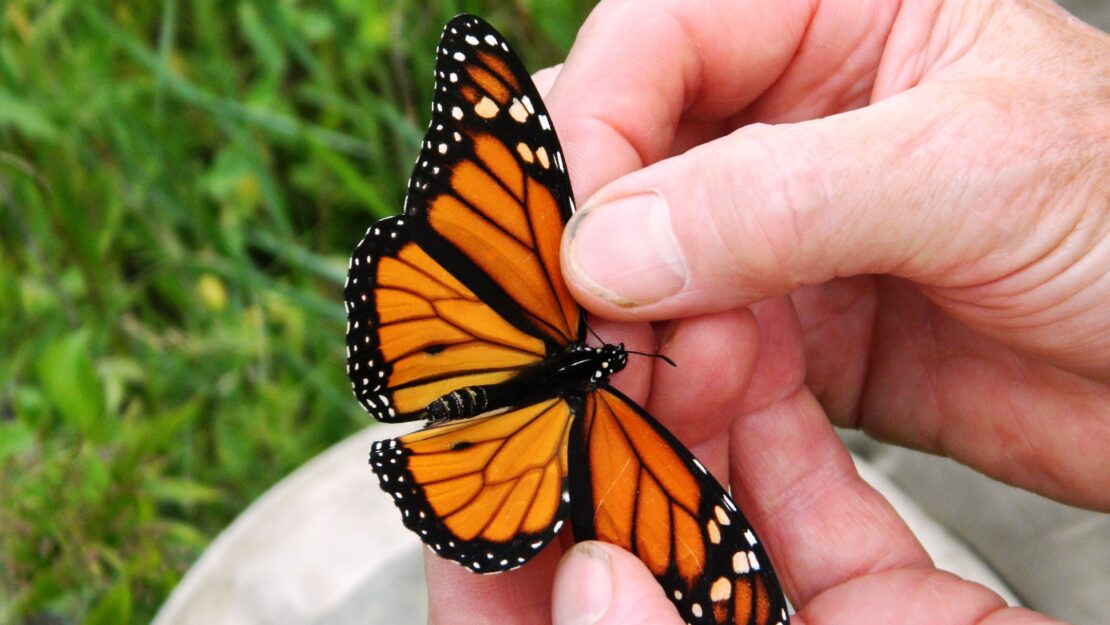Butterfly survey


By: Ann Horner
My supervisor at the Ramsey Conservation District (RCD) came up to my desk last week and asked, “Would you mind spending Thursday catching butterflies?”
Conservation Corps Minnesota and Iowa is one of the few organizations I can think of where that question would ever be asked. I currently serve in Conservation Corps Minnesota’s Apprentice Academy, an amazing program which allows 37 young adults to spend the summer serving alongside conservation professionals at Minnesota Soil and Water Conservation Districts across the state. I have learned so much in such a short time and gained a host of skills, including butterfly surveying for the Minnesota Department of Natural Resources.

Last Thursday, I arrived at the Arden Hills Army Training Site (AHATS), an area not normally open to civilians. Dean Hanson, an Entomologist, reviewed butterfly species and gave us tips for catching and identifying them. Mary Lee, the Minnesota Army National Guard Environmental Protection Specialist for AHATS revealed that we would be performing the butterfly survey because butterflies are an indicator of prairie health.
As I learned in my college biology courses, biodiversity (the diversity of life, both plant and animal, in an area) tends to lend stability to an ecosystem and is tremendously important. Ecosystems threatened by human interaction are especially of concern. Prairies are particularly interesting to many conservationists because they have been so depleted and fragmented by human activity. They provide habitat for a wide array of species native to Minnesota, including butterflies.

Butterflies can be a bioindicator species. This means that their presence—or absence—may give conservationists and biologists important clues about the overall environmental health of an area. Scientists can use the number of butterfly individuals and species in an area to form ideas about habitat quality. Butterflies are important pollinators for many plants. Migratory butterflies affect the health of ecosystems not only in Minnesota, but the areas to which they migrate. Unfortunately, butterfly populations are declining. Any butterfly data gathered, such as in this survey, can be useful for restoring the butterfly population and would also contribute to the health of the butterflies’ habitat.
On our survey at the first site, we wandered through a prairie looking for any sign of movement above the plants. The second site we visited was a mixture of prairie and upland forest. Whenever we saw a butterfly we didn’t recognize, we caught it and ran it to Dean Hanson, who identified it.

Greg Juenemann, another volunteer has taken part in this survey four times; in the years 1998 and 1999, then 2013 and 2014. Through his experiences, he noticed a dramatic decrease in the number of butterflies—both species and individuals—from when he surveyed in 1999 to when he started again in 2013. When I asked him what he thought the cause of this decline was, he said there were many, such as decreased habitat, pesticide use, and global warming/climate change. Mary added that she thinks the butterfly population has decreased because of a decline in the conditions of the butterflies’ wintering habitat. Many butterflies migrate to South and Central Americas for the winter, where their habitat area has decreased due to land development.

Despite the problems facing butterflies, I couldn’t help but be happy. I was running around in a beautiful landscape with my net and binoculars, along with environmentally conscious, knowledgeable people, helping to gather data that may contribute to the well-being of butterflies and their habitats. It was an excellent way to spend a day at work.